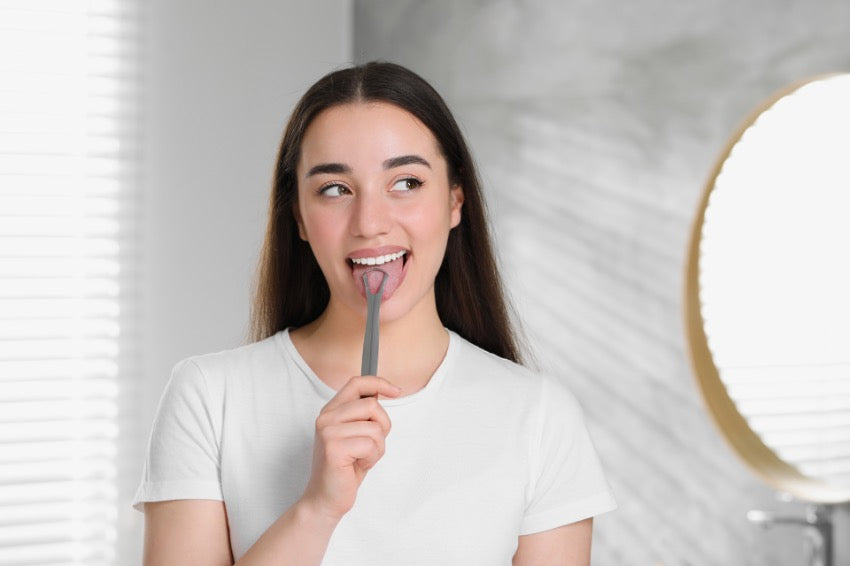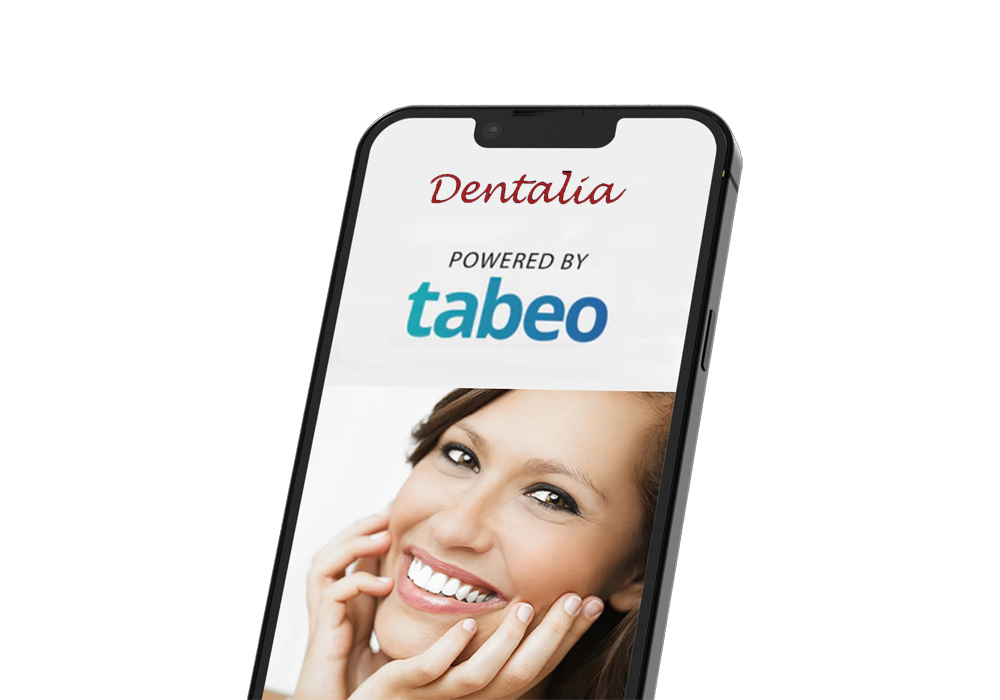Brushing, flossing, whitening, cleaning, and now scraping - the list of ways to care for your teeth and your oral health grows longer every day. One of the most popular dental trends to have emerged in recent years is tongue scraping, but how effective is this new phenomenon? Find out with us as we explore how this technique works, and whether you should be doing it at all.
What is tongue scraping?
This practice may have burst into our lives fairly recently - there are currently 189.2M videos on TikTok on the topic - but it is a much older concept. Recorded across the centuries as an accessible and important self-care technique, the aim behind this practice is to rid the mouth of any buildup that could harm your health or damage your teeth and gums. This practice has historically followed the principles of detoxification and replenishment and scraping away the bacteria that builds up on the tongues’ surface remains just as effective now as it has always been.
This quick and accessible treatment is more effective than many may think. Whilst we all brush our teeth twice a day and are encouraged to floss and use mouthwash, it is likely that not many of us include our tongue in our list of areas to clean. However, our tongue is just as susceptible to bacteria as our teeth and gums, and a buildup of this causes a range of issues starting with bad breath all the way up to gum disease. Beyond this, any bacteria that remains on the tongue is frequently taken back into the body through swallowing. So, if you are considering including this technique in your daily oral hygiene routine, let’s take a look at what you need to know.
How to scrape your tongue
Tongue scraping has remained an enduring practice for so long thanks to its affordability and easy technique. To get started, all you need is a tongue scraper, which is available online or at the recommendation of your dentist, and we highly recommend that you opt for a metal scraper from a reputable supplier, as metal tends to be more durable and plastic may be too gentle to deliver the same results. Alternatively, you can also use the back of a toothbrush rather than a scraper, depending upon your own preferences.
Once you’ve got your scraper or toothbrush in hand, you only need a running tap and a few minutes to clean your tongue by following these steps:
- Rinse the tool: First things first, rinse the scraper with hot water before getting started to eliminate any residue from production.
- Test the scraper: Your tongue is delicate, and whilst you want to remove as much bacteria and plaque as possible, you certainly don’t want to damage the top layer of your tongue. So, check that your scraper feels comfortable and assess how much pressure you can exert without risking any damage to your tongue.
- Position your scraper: Stick your tongue out and keep your mouth open to expose as much of the surface as possible and place the scraper at the back of your tongue. If this feels uncomfortable or you gag easily, start at the middle of your tongue and gradually work your way back as you get used to the feeling.
- Start scraping: Press the scraper lightly against your tongue and apply a gentle pressure before carefully pulling the scraper forward toward the tip of your tongue in one smooth motion.
- Rinse and repeat: Rinse away the coating that has been removed - this will include bacteria, food debris, dead cells, and other buildups. Once you remove all of this from the scraper you can repeat the process 2 or 3 times to cover the entire surface of your tongue.
- Rinse and clean: Finish by rinsing your mouth with water and mouthwash to remove any loosened bacteria or cells that are still on the surface.
Once this is done, your tongue will be clear of any buildup that has accumulated in the time since you last cleaned your tongue. For some of us this is childhood or adolescence, so it is certainly a good idea to include tongue scraping as a long-term addition to your cleaning routine.
With regular scraping, you should soon be able to notice a marked difference in your breath, as people often forget how much of a difference a clean tongue will make. Your breath should smell fresher, and with less bacteria in your mouth you are taking proactive steps towards preserving your teeth and gum health, but it is important to always remember that this technique is intended to complement your brushing and flossing efforts and that brushing your teeth should always remain your top priority.
Need help maintaining your smile?
As always, brushing your teeth, scraping your tongue, and attending regular checkups are the pillars of a healthy mouth and smile. So, if you are due your next checkup, or there is a specific treatment that you are interested in, book an appointment with our team today.





